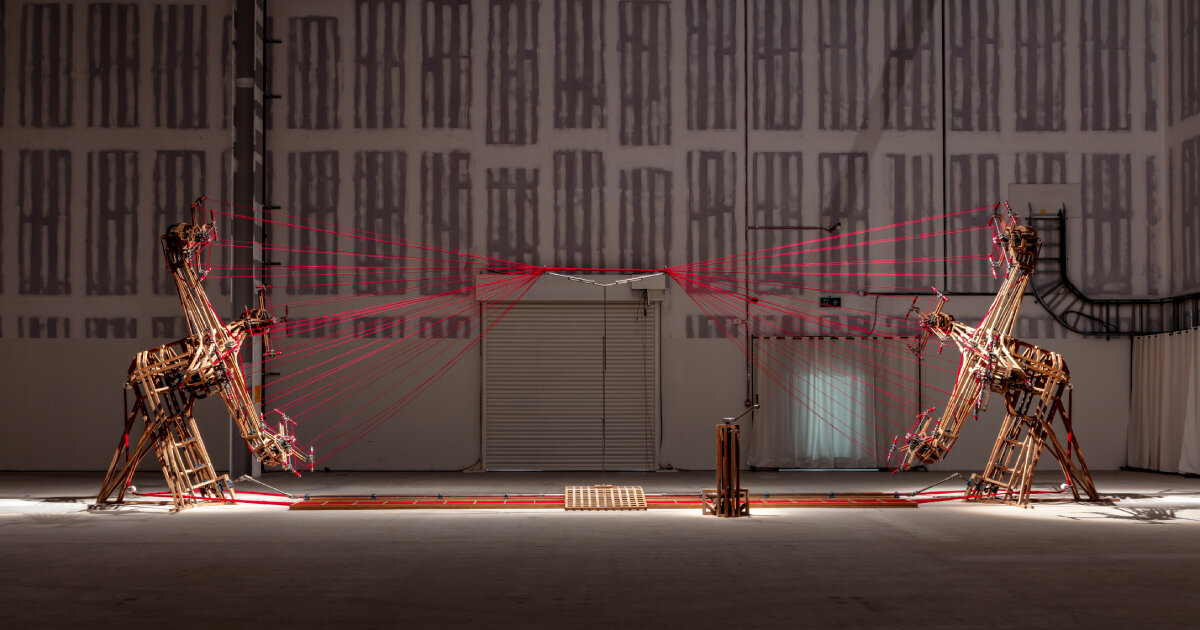Forty rotating arms weave in Conrad Shawcross’ rope machine
Conrad Shawcross creates The Nervous System (Umbilical) (2025), a large mechanical and rope-machine artwork that weaves umbilical-like cords with motorized arms. On view for the first time at Here East in London between September 11th and November 2nd, 2025, the rope-making sculptural machine is part of the British artist’s long-running project called Rope Makers, which explores how machines can make rope through complex patterns of movement. The device was originally commissioned by the Museum of Old and New Art (MONA) in Tasmania, and the artist brings it over to London for a while before it is set to be permanently installed in Australia. The rope-making machine is both a sculpture and a functioning device, standing 10 meters high and 12 meters wide.
It is made from metal, timber, and mechanical parts, all assembled in the artist’s studio in Hackney, London. The design has 40 interlocking rotating arms that move around a central point, and each arm carries a spool with fibers, twisted and woven together to form a long rope. The machine works based on how traditional rope is made, but on a much larger and more complex scale. In a normal rope-making process, several threads are spun together while they are pulled tight, creating tension that keeps the rope strong and consistent. In the artist’s machine, this process is multiplied and expanded, with 40 arms rotating in different orbits, each moving at a slightly different speed and direction. As they turn, they twist and combine the threads into a single rope that grows from the center.
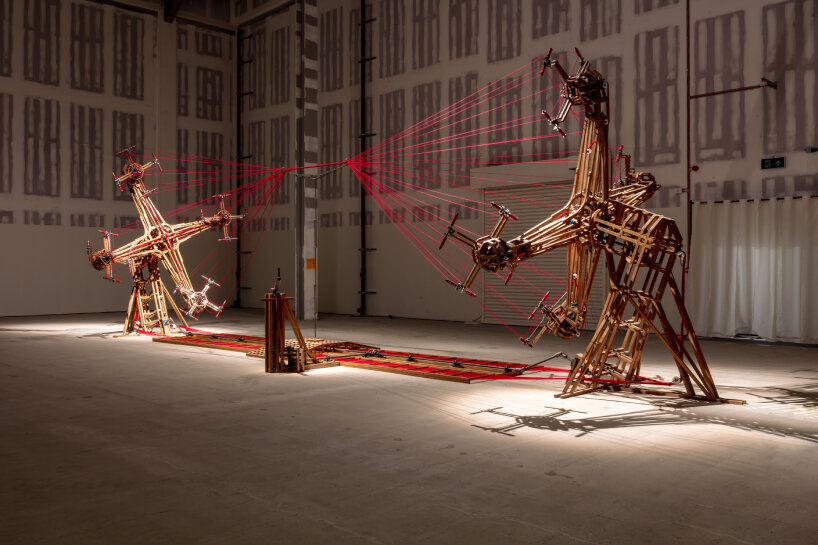
all images courtesy of Conrad Shawcross | photos by Richard Ivey, unless stated otherwise
Two other mechanical artworks on view at here east in london
The arms of The Nervous System (Umbilical) by artist Conrad Shawcross are connected by a network of gears, motors, and joints, programmed to move in specific cycles. These cycles never fully repeat, meaning that every moment of the weaving process and the rope-making machine is never the same. The rope produced is continuous and long, but no two parts of it are made in exactly the same way, and it results in an umbilical-like cord. Industrial fibers make up the woven cord, and as the rope passes through the middle of the structure, it collects the effects of every motion made by the machine’s arms. Over time, small changes in the way the arms move, caused by mechanical shifts, timing differences, or small errors, become visible in the texture and pattern of the rope.
The movement of the arms and spools is modeled after the way planets orbit the sun. Each arm represents a planetary orbit, and the rope at the center represents the path of the sun as it travels through the galaxy. The spools move around one another in complex, overlapping loops, similar to how celestial bodies move through space. This gives the machine a system-like structure, similar to a solar system, but made of gears and spools instead of planets. The exhibition also connects Umbilical to earlier artworks that deal with machinery and the passage of time. The other rope machines on display at Here East in London include Yarn (2001) and Ode to the Difference Engine (2007), both of which were built from oak and with mechanical systems. They remain on-site alongside Umbilical, weaving cords and ropes using motorized and mechanical arms for the viewers.
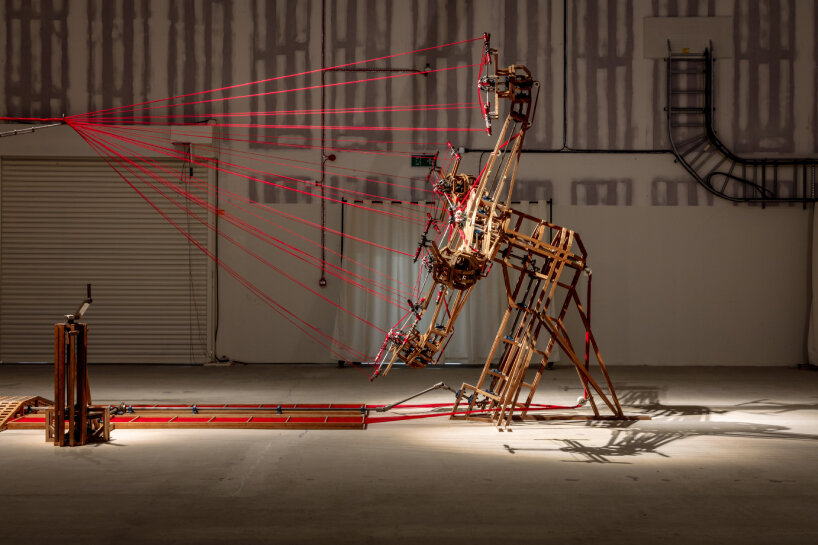
view of Ode to the Difference Engine (2007)
Umbilical to head to Museum of Old and New Art
The series of rope-making machines began more than ten years ago when Conrad Shawcross discussed the idea with David Walsh, the founder of MONA. The artist developed the concept through mechanical studies and built several smaller rope-making machines before this one. Earlier works in the Rope Makers series include Yarn (2001) and Ode to the Difference Engine (2007), making Umbilical a continuation of the artistic study but using more advanced engineering. When the exhibition closes in London, the mechanical sculpture is to be taken apart and shipped to MONA in Hobart, Tasmania, where it will be permanently installed in its own atrium by 2027.
Once it begins running there, it is expected to operate continuously, stopping only once a year to change its spools. The rope then will slowly pile up beneath the machine, creating a growing archive of time. Every section of the rope can be linked to a specific period during the machine’s operation. The design of The Nervous System (Umbilical) was created with help from engineers and fabricators at Structure Workshop and Brier Solutions, and lighting was provided by TM Lighting. The sculptures are on view at Here East in London until November 2nd, 2025.
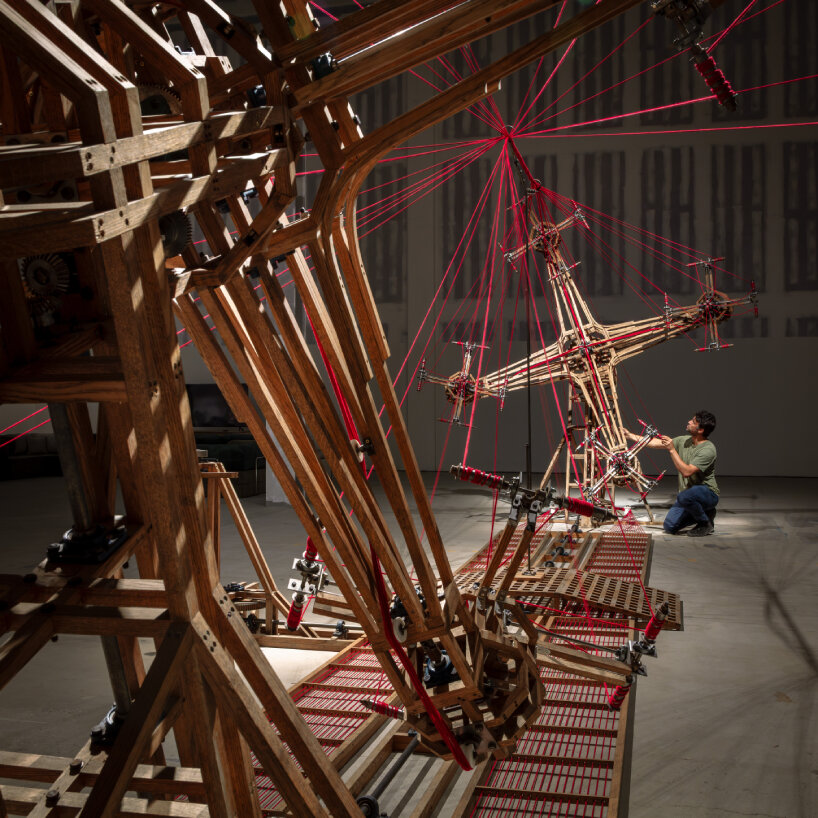
even the Ode to the Difference Engine (2007) weaves cords using mechanical wooden arms
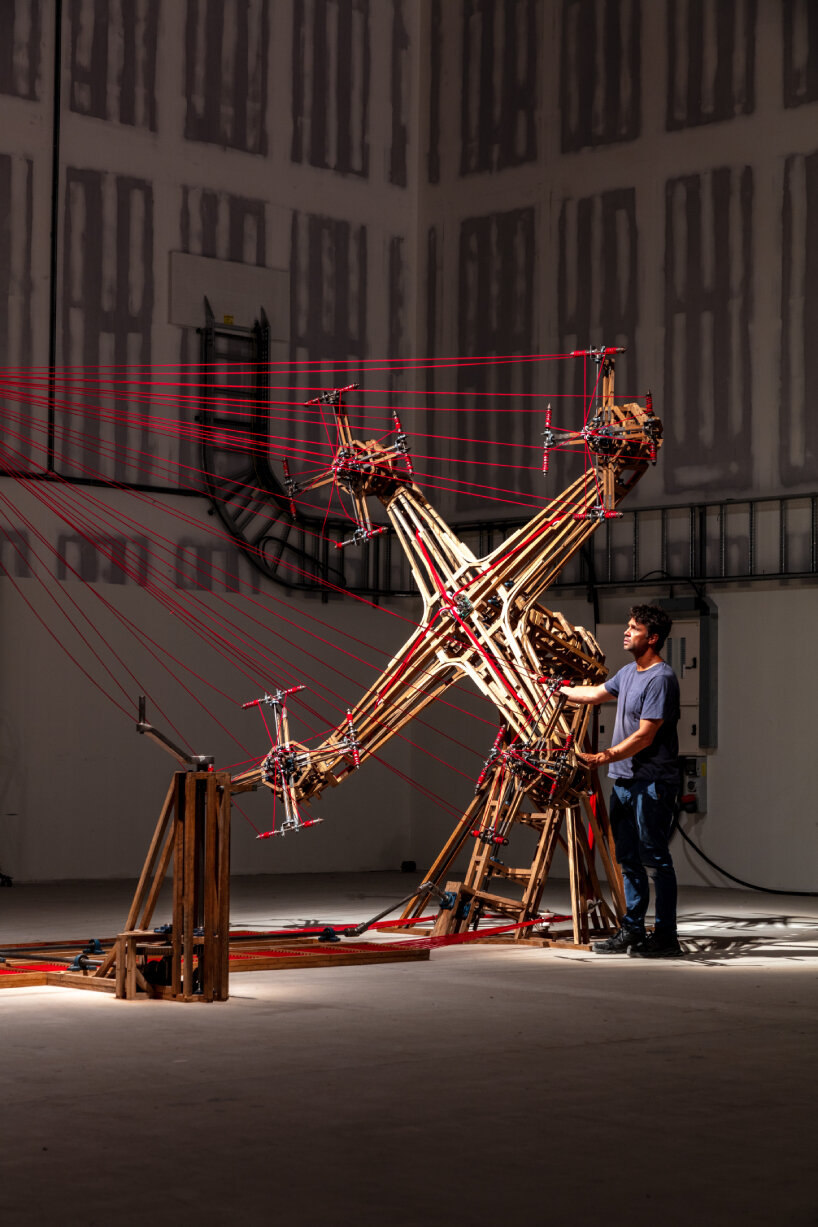
the machine works based on how traditional rope is made
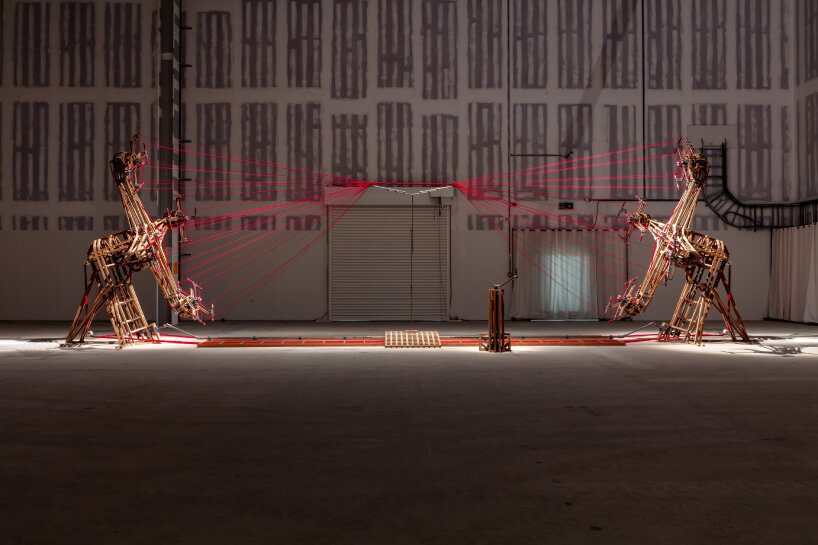
view of Ode to the Difference Engine (2007) at Here East in London
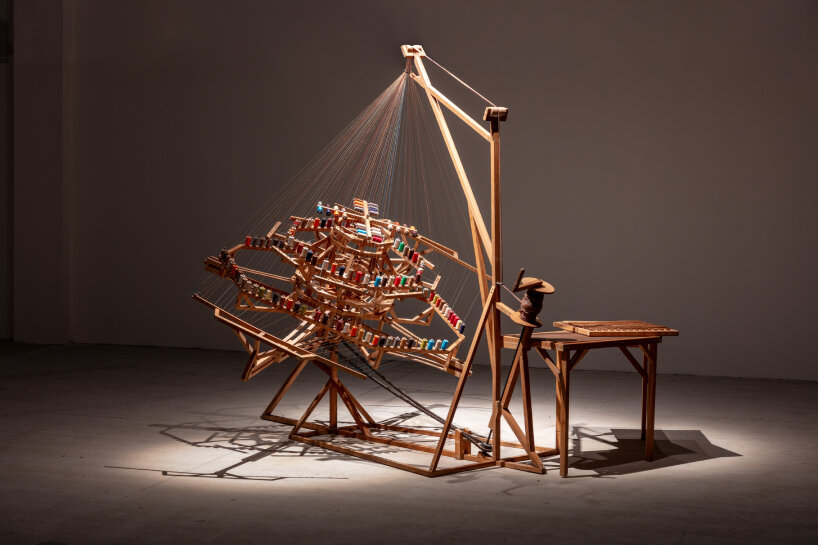
view of Yarn (2001)
